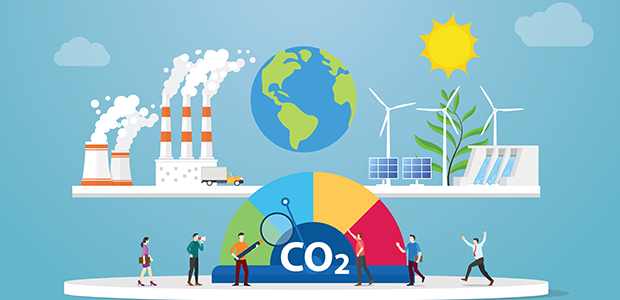
The Fintech Road to Carbon Neutrality
Fintech companies have huge implications in the world on the global economy, and on global warming. Currently, the world is facing one of its greatest challenges yet, to prevent rising global temperatures, by reducing greenhouse gas (GHG) emissions.
The fintech industry can be said to have been a direct cause of climate change, having helped finance fossil fuel plants, and in the excessive use of energy for crypto mining. So, some might say the industry has a responsibility to provide innovative technology to help reduce GHG emissions. Currently, this can be seen through their use of technology to help integrate renewables into power grids, analyse bank statements to demonstrate the CO2 emissions from people’s lifestyles, and use of artificial intelligence (AI) to check if financial firms are greenwashing. Fintech companies are helping others achieve net-zero emissions.
But more can be done by the fintech industry to directly address their own emissions.
Fintech companies have always endeavoured to aid other companies, even now they are focusing on which solutions they can provide to help others reduce carbon emissions. However, the fintech industry itself is the world’s fifth-largest emitter of GHGs. It is pivotal that the GHG emissions produced by Fintech companies do not increase, thus becoming carbon neutral is essential and should be happening now. Then plans should be made to become net-zero carbon ASAP.
The difference between carbon neutral and net-zero is often unnoticeable, but it is important to understand they are not the same thing (Carbon Neutral vs NZC). Carbon neutral is where fintech companies do not increase carbon emissions and then use offsets to reduce the baseline value. Whereas net-zero carbon decreases carbon emissions using strategies, then offset as a last resort to reduce emissions to zero.
This is achieved through techniques that the fintech industry specialise in. Methodical, structured, and quantified approaches that can optimise the use of resources to help lower energy bills, reduce waste and deliver true reductions in emissions.
First of all, a baseline carbon footprint measurement is required to understand where the GHG emissions are primarily sourced from. This first step demonstrates your commitment to environmental responsibility. Often this is done by following international standards such as the Greenhouse Gas Protocol.
The two largest Fintech companies now provide their carbon footprint annually. But only since 2019 has Visa measured and reported their entire emissions inventory. This has been the case for most companies as the focus has been on emissions from direct operations and electricity consumption (Scope 1 and 2). Now, Scope 3 is arguably the most important to measure as the emissions a company are responsible for, but are indirectly emitted, are often the largest emitter of the three scopes.
This includes the goods a company purchases right up to the disposal of products they sell. Yet often, Scope 3 emissions quantified by companies only include business travel. For example, Mastercard began publishing Scope 3 emissions from purchased goods, fuel-related activities, waste disposal, and employee commuting on top of business travel from 2018. So the two largest fintech companies now measure their entire carbon footprint annually, leading as an example for other companies to follow.
Once a baseline has been reported, it is important to annually measure this again ensuring the GHG emissions do not increase further. Then commit to reducing emissions following accreditations such as the Science Based Targets initiative (SBTi), which will approve your reductions to ensure we limit global warming to 1.5°C. Strategies to reduce GHG emissions are difficult, but things worth doing are never easy.
To begin, fintech companies should prioritise behavioural changes to help reduce usage and waste disposal. Then, all fintech company-owned properties should be fitted with renewable energy sources, reducing GHG emissions from electricity and reducing reliance on the grid. Often fintech companies lease properties so full control over bills and maintenance is not possible. In this case, they should prioritise locations with green certifications and push landlords to implement environmentally friendly strategies to reduce GHG emissions.
However, fintech companies' biggest hurdle will be from the use of data centres. They already use more than two percent of the world’s electricity and generate the same amount of emissions as the airline industry. Not only do data centres consume incredible amounts of energy, but they also go through computer hardware as technology is not designed to last.
Consequently, the requirement for large amounts of energy and non-sustainable technology hinders each other as the energy creates heat, which has to be removed through cooling systems before the sensitive IT equipment is destroyed. Creating an endless cycle of replacing equipment and dissipating heat. Thus, fintech companies have to be conscious of their use of data centres, choosing companies that have smaller power usage effectiveness. Or own their own data centre that is also an energy hub that produces, consumes and stores green energy.
The strategies your fintech companies choose to become net-zero carbon depend entirely on understanding where each gram of CO2e is emitted from. This task will be no challenge for an industry as accomplished in the fields of quantification and technology as fintech is.

